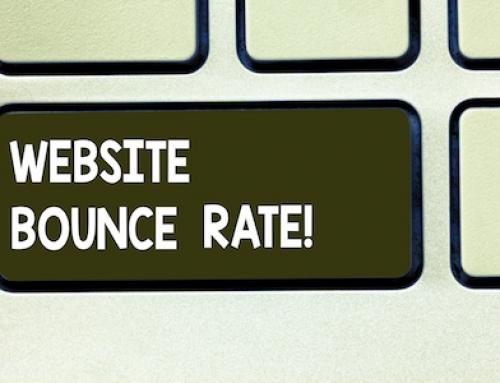
In the fast-paced digital world we live in, capturing quality leads in record time is the number one goal of any marketing strategy.
However, we all know that igniting consumer interest is not enough — it can die down as quickly as you kindle it.
Consumers want a highly personalized experience, and they want it now. Fail to provide it, and you fail to convert them. They don’t want you to talk to them — they want you to talk with them.
That’s why conversational marketing is getting increasingly relevant every day.
What Is Conversational Marketing?
This marketing strategy is all about creating a dialogue-driven approach to lead generation and conversion.
Customers love it when you cater to their specific needs and customize your service instead of having them face a generic, one-size-fits-all lead generation form. So how do you achieve that? By engaging in a personalized conversation with them.
A dialogue-based marketing strategy usually starts with some kind of conversational marketing software, most commonly an intelligent chatbot.
Thanks to its advanced ability to understand natural human language, this type of software can start the conversation with a prospect, provide answers and guidance, and even lead them through the entire sales funnel.
Apart from software, this marketing approach also uses live chats with human representatives who usually close the deal.
Customers enjoy personalized conversations — they allow them to get what they need immediately, without having to jump through endless hoops.
The Rise of Chatbots
Conversational AI bots have been on the rise lately since they can automate customer interactions, which comes with many benefits (to be discussed below).
You can find numerous chatbot providers, and they offer all kinds of bots, from onboarding assistants to upselling agents.
In a conversational marketing strategy, these bots are customized to a tee to reflect the needs of the company using them. So programmers can configure them to ask just the right questions and provide adequate answers.
Businesses can integrate them across all digital channels, from specific website pages to social media, to make their lead generation efforts much more efficient.
In essence, chatbots are powerful programs capable of learning from experience, perfecting their performance, and collecting valuable info about potential customers. Prospects love using them since they are quick and straightforward.
Of course, they can’t replace a live chat representative completely, but they can take on the brunt of work and are available 24/7.
Why Lead Capture Forms and Other Methods Are Outdated
Pushy selling techniques are a thing of the past. Consumers are used to getting whatever they want in just a few clicks, so a lengthy traditional funnel doesn’t work anymore.
Outbound techniques, such as cold calling and emailing, take a lot of time and effort and are ultimately inefficient. Instead, you need to let the customer come to you.
However, traditional inbound tactics, such as letting potential customers fill out lead capture forms, are equally outdated. It takes time to acknowledge leads and reach out to them.
On the other hand, conversational marketing is ideal for lead generation because it allows for real-time customer interaction with the brand. There’s no waiting time at all. Whatever the prospect needs to know, they get answers immediately. In some instances, such as in eCommerce businesses, they can even complete a purchase or transaction on the spot.
Conversational Marketing Strategy — Step by Step
A conversational marketing strategy can be an addition to an already existing marketing plan, and it’s not difficult to implement. You don’t even need to get rid of any other outbound or inbound tactics, but rather add a new lead capture channel.
Here’s a typical example of how it works.
How to Start a Conversation
When a prospect visits your site or a social media channel, a chatbot bubble appears in the bottom right corner. The intelligent chatbot can be customized for each page with a unique message.
So when the bot offers assistance and the customer responds, the bot starts working on their request immediately and pulls out whatever they need automatically — be it an answer, a page they’re searching for, a form, or anything else.
This is how customer engagement starts.
Understand the Customer
Chatbots are great at qualifying leads. They can be programmed to ask a series of questions a live rep would have asked anyway. Based on the answers it gets, the chatbot can analyze the input and decide if the lead is ready to convert.
In essence, the chatbot platform will understand the intent of the website visitor — whether they want to make a purchase, talk to customer support, book a demo, or anything else. Thanks to its machine-learning algorithm, it becomes better at understanding customer needs in time and with experience.
Point the Customer in the Right Direction
Chatbots facilitate the customer journey by helping them complete the transaction, with or without live rep assistance. It can also identify sales opportunities even before customers are aware that they’re ready to convert.
By helping them complete a purchase or nudging them in the right direction, the bot saves them a lot of time and increases their satisfaction levels.
What’s more, we all know that leads tend to get cold rapidly and exponentially faster as time goes by. Getting them while they’re hot is key.
Live Representative Takes Over
Instead of closing the chat bubble and either calling a live customer support number or getting to a different media channel to reach them, the customer can be redirected to the live support in a matter of seconds. They don’t even have to change the communication channel.
So the bot gets them through to the expert or sales rep they need for more complex issues. The best part of this process is the fact that the rep gets all the info that the bot has collected about the lead. That way, they are ready to assist them in the best possible way.
Messaging and Self-Service Are the Future of Lead Generation
Almost 70% of all consumers want to engage with businesses via messaging platforms. The same study shows that, conversely, only 13% of SMBs offer that option.
Texting is the number one communication method among younger and middle-aged people, so why not use that to increase lead generation?
After all, consumers prefer solving the problem and figuring the way around a website themselves to talking to a live rep. Self-service is becoming a preferred method over reaching out to a support team, with 40% of customers choosing the former.
Chatbots and other conversational marketing tools are a perfect means to an end for a modern customer, allowing them to message their way to their goal.
Benefits of Conversational Marketing in Lead Generation
A conversational marketer can create a strategy that is much more effective than any traditional marketing tactic. To sum it up, here are some of the greatest benefits of this lead generation method.
Customer-First Experience
This marketing strategy allows you to build stronger customer relationships. They will appreciate the personalized approach and the human touch and will feel catered to. They are in charge of how they want to experience the brand they’re engaging with, which makes them feel comfortable and more likely to convert.
More Leads in Less Time
As we have mentioned, traditional funnels take time, and every minute counts in capturing leads. Instead of cold calling and sending numerous emails in an attempt to convert leads, the conversational marketing team can sit back and relax while the bot reaches out to the site and social media visitors and responds in real-time.
Also, a chatbot can engage with as many people as necessary simultaneously, scoring leads almost immediately.
Shorter Sales Cycle
Conversation-qualified leads (CQLs) close faster because of the real-life response and instant assistance. So your sales cycle shortens significantly in comparison to the more traditional methods.
Valuable Customer Data
What better way to figure out what customers want and how they want it than by engaging in a direct dialogue with them. In time, you’ll see exactly how potential customers like to communicate, what they want in a product or service, what bothers them, etc.
On the other hand, a lead capture form can only provide you with their contact info.
Better Conversion Rates
So generating leads is one thing, but converting them is a whole different story. Many people visit a website, but the average landing page conversion rates are a mere 2.35%. With the use of direct messaging, your CR can skyrocket as an intelligent chatbot initiates the conversation and leads the prospect to complete the cycle.
Building Trust and Brand Awareness
Customers are much more likely to like and return to a business that treats them warmly like a person rather than giving them a cold, impersonal treatment. This type of connection gives companies credibility and inspires trust in consumers. It also increases brand awareness and helps the customer associate the brand with positive feelings.
So as you can see, the benefits of conversational marketing in lead generation are undeniable, but they’re also far-reaching and bring long-term positive results.
Jennifer Wilson is a writer at Qeedle.com She knows business processes and operations management inside out. As she understands all the challenges of running a small business firsthand, it’s her mission to tackle the topics that are most relevant to entrepreneurs and offer viable solutions.


